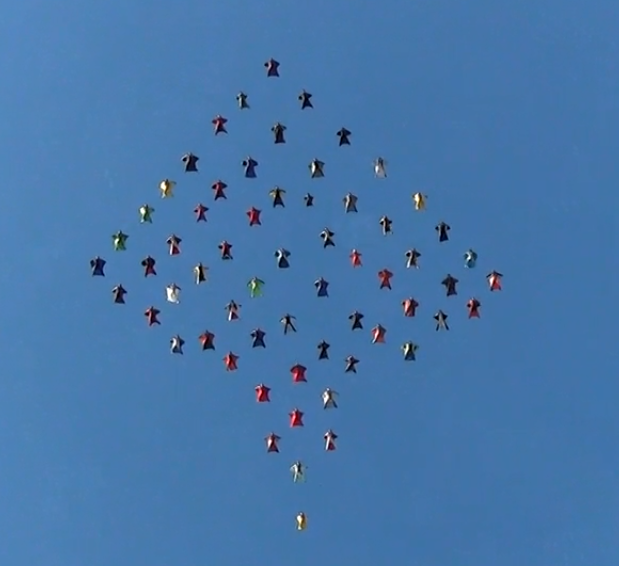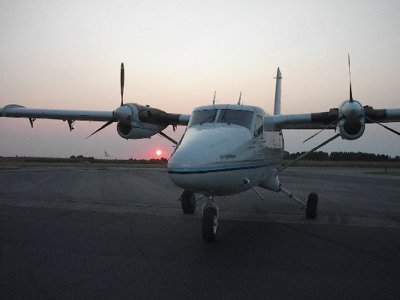Recommended Posts
kallend 2,146
Quote
No. You will not drop straight down. What everyone is forgetting is that once you are out the door you are in two completely seperate mediums.
Not everyone, Chris.
Curses you Riddler! But did you add in 2 minutes for the 2 minute call prior to first drop? That's not part of jumprun? Ok, I'm arguing semantics. ![]()
![]()
Oh yah.....and ![]()
Chris
QuoteQuoteAlso, a Twin Otter indicating 80 knots on the airspeed indicator at 13K will NOT be doing 80 knots over the ground in no wind conditions. It will actually be going about 105 knots.
I'm not a pilot, please can you explain this to me? (Thinner air?)
Yes, thinner air. It is called True AirSpeed or TAS. To calculate TAS you have to correct for nonstandard pressure and temperature. That said, typically with no wind and at altitude, your groundspeed will be about 105 knots when indicating 80-85 knots.
www.diverdriver.com
ATP/D-19012
FB #4125
Nerds don't count in "everyone". >
billvon 3,109
>13K will NOT be doing 80 knots over the ground . . .
>I'm not a pilot, please can you explain this to me? (Thinner air?)
Yep. First correction is IAS (indicated airspeed, or what the pilot sees on his airspeed indicator) to TAS (true airspeed, or what your groundspeed would be with no wind). A good rule of thumb is add 2% per 1000 feet, so at 13,000 feet your actual speed is 100 kts if you're going 80 kts.
The next two steps I do is convert to MPH and then FPS. Multiply by 1.15 to get MPH, then 1.46 to get FPS. 80kts IAS becomes 165 fps.
An easier way to do this is to just multiply your (airspeed in knots - windspeed) at 13,000 feet by 2, and that's approximately the number of feet you cover per second. So if your aircraft is flying 80kts, and the winds are 30kts, you cover 100 feet every second. Want to be 500 feet from the previous group? Wait 5 seconds.
RichM 0
QuoteAn easier way to do this is to just multiply your (airspeed in knots - windspeed) at 13,000 feet by 2, and that's approximately the number of feet you cover per second. So if your aircraft is flying 80kts, and the winds are 30kts, you cover 100 feet every second. Want to be 500 feet from the previous group? Wait 5 seconds.
Sweet, I can do that on run-in, and stash the rest for rainy days. Thanks Bill.
kallend 2,146
QuoteWant to be 500 feet from the previous group? Wait 5 seconds.
I can't imagine wanting to be that close.
RichM 0
QuoteQuoteWant to be 500 feet from the previous group? Wait 5 seconds.
I can't imagine wanting to be that close.
If it's a solo following a solo wouldn't 500ft be plenty?




.thumb.jpg.4bb795e2eaf21b8b300039a5e1ec7f92.jpg)
I'm not a pilot, please can you explain this to me? (Thinner air?)
Share this post
Link to post
Share on other sites